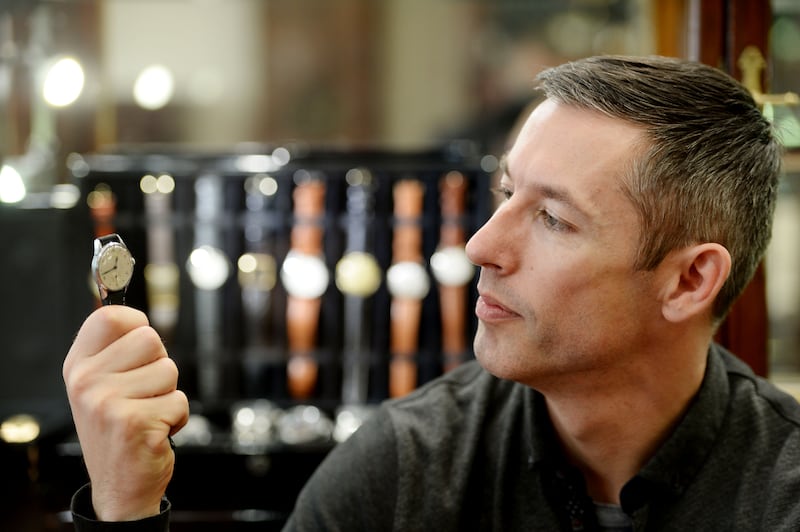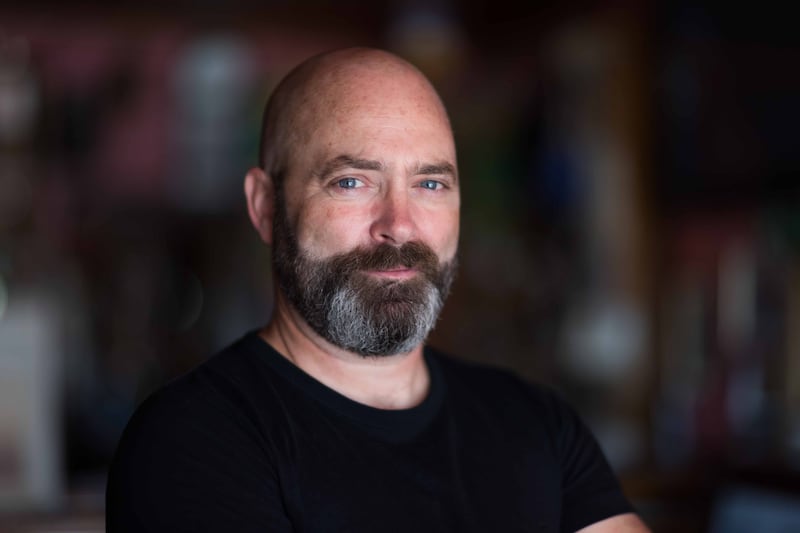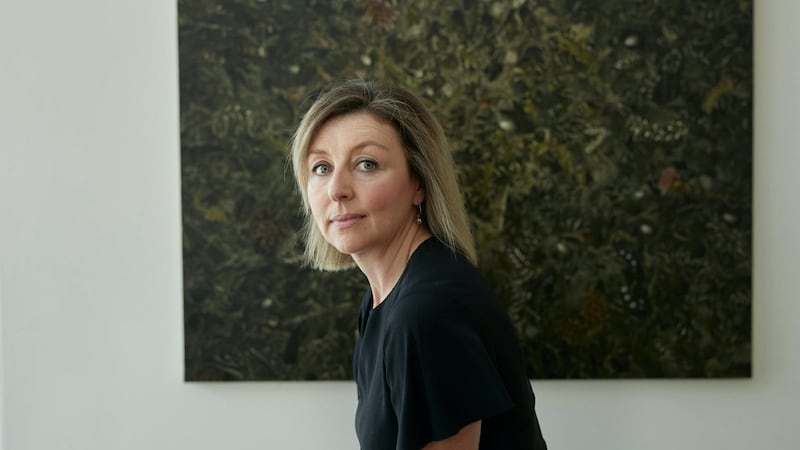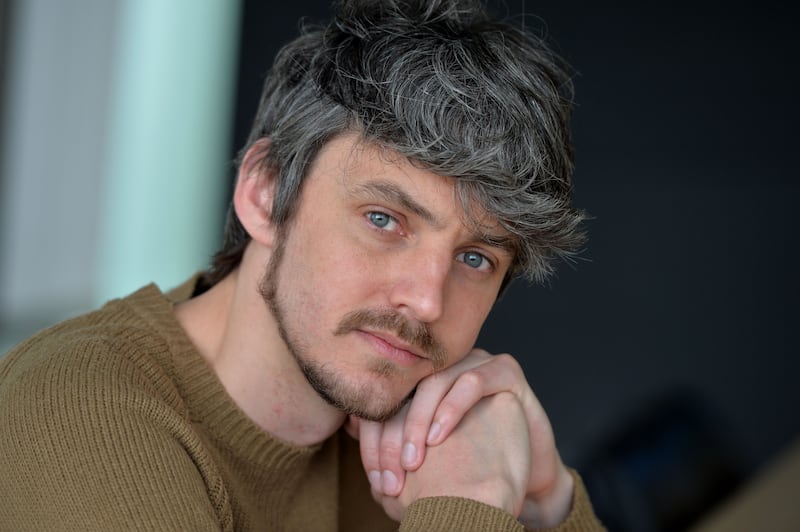How perfect does a writing place need to be? When I started out writing fiction for children, I wrote on trains, cafes, in the National Library, and in the car with the laptop squeezed between my belly and the steering wheel. At the moment, I spend most of my writing time at home, carrying the laptop from attic to the kitchen table and, to really spice things up, a different chair at the kitchen table. Just like every other home worker, really.
But of late, I have taken to writing in the local castle. As a children’s writer, this is a bit too on the nose. Hackneyed, really. I wouldn’t go as far as to say you wouldn’t make it up, but it’s a Hallmark movie view of where a children’s author writes.
Technically, Ardgillan Castle, here in north Co Dublin, is a castellated 18th century country house surrounded by grounds and beautiful gardens. It’s busy with tourists, runners, walkers, a cafe and artists’ studios that are home to, among others, jewellers, painters, a ceramicist and a fashion designer. And on occasional days, I drive the short distance to it and, buoyed by coffee and a welcome hush, I find I write well there. The light and air freshen up the thinking. It is a break from my attic desk, where the wall is two feet from my nose.

I wonder if I could yet become precious about where I write, require 300 years of history and a castle tower or my publisher can forget about it. A few years back, I met a novelist who said she could only write in one particular room and in a still, silent environment. It sounded terribly limiting, almost to the point of being a trap. But I don’t recall meeting any writers since who require such exact conditions.
READ MORE
Donal Ryan – best-selling award-winning author of six novels including The Spinning Heart and recent The Queen of Dirt Island – now writes between his home and his office in University of Limerick (UL), but he too started off working anywhere he could escape to. He once lost 14,000 words of a novel because he used the tumble-dryer as a desk, destroying his laptop’s hard drive.

“How stupid was I, really?” he asks. “We bought a new dryer and it was really smooth, and you could hardly feel the vibrations. At the time it was the only space that we had that was child free and an escape from the chaos. And was a nice enclosed, warm space. But of course, the vibrations were going through the hard drive all the time ...”
This tale has a happy ending.
“I was kind of glad in the end because shortly afterwards I left to go on tour in Germany. I usually find it hard to write in transit. I can’t write on buses or planes. But for some reason, maybe it was the Germanic efficiency of the trains, it was just conducive to writing and I got the whole thing rewritten and, you know, to a higher standard.”
Ryan finds he can shut out ambient noise easily and has actually embraced it in the past. His first two novels were written at the kitchen table, from 9pm until midnight, while the baby slept and his wife Anne-Marie watched TV. “I could just hear the murmur of television and knew she was right there. There was something about the kind of background noise that was really soothing. And I began to rely on this situation, which is kind of dangerous really. But it was lovely. I have fond memories of those early experiences.”
It’s a reminder that the writing “place” is secondary to the act of just getting it done. That he now has an office in UL is a “privilege”, he says, when so many don’t have that opportunity and rely on whatever space presents itself. “I think writers are the same when we start off and you’ve got so much else going on. Before writing becomes your focus it’s just to fill the kind of interstitial spaces between real life.”
Edel Coffey, author of recent award-winning debut novel Breaking Point, says these are “nothing minutes”, as once described to her by another writer. She recently posted on Instagram from inside her car, showing her laptop open and a story in progress. She regularly makes use of those “nothing minutes” on her children’s school run.
It goes against the notion that “you need days and hours, that you need silence and candles and incense and somebody bringing you coffee”, she says.
“I think there’s a Pavlovian response to the car now. If I’m sitting in the car I feel like I should be writing. If I write 5,000 words in one day and then don’t go near it for a week, that’s not as good as writing 100 words every day for me. It just keeps the story really alive in your head. I know I have this finite period of time. So I will write at speed.”

When writing at home, Coffey will switch rooms occasionally just to avoid boredom, or go to her local library in Galway, where people will say hello, but also leave you to work. “I will write anywhere. And I think that’s a gift from having been a journalist and working in an office full of people shouting interesting information over your head – or having an argument over your head.”
She knows there are writers who like the calm of a retreat, where the meals are cooked and the cleaning done and they have little to concentrate on but their work. “I’ve never done a writer’s retreat. I know that if I have three days spooling out in front of me, I will literally watch 20 episodes of Made in Chelsea when I should be writing.”
And that is a final reminder to me that place can matter but being able to focus for a while is always the key.
It is great to escape to the local castle and occasionally live out a Hallmark fantasy in a place where they recently made an actual Hallmark movie. And I find myself soaking up enough of the surroundings that they have informed the fictional setting of a new story I’m writing. But there are mundane yet important factors about a writing place that go beyond beauty and ambience.
Perhaps the true dream of the writer is not to be squirrelled away in a castle tower, wrapped in a creative cocoon, but to find somewhere, anywhere that the wifi doesn’t reach, the phone signal is bad and you’re forced away from the timesucking internet for a couple of chapters.
Shane Hegarty’s new book is The Shop of Impossible Ice Creams: Big Berry Robbery (Hodder Children’s Books)
ROB DOYLE
Author Rob Doyle has recently spent two periods living and writing in a South Dublin Martello tower. “It’s just fabulous,” he says. “You’re talking about the castle being almost too on the nose as a writer, well this, this is almost too on the nose as a kind of writerly heaven and haven, because it’s just so physically beautiful, aesthetically beautiful and it’s looking out over the sea.”
Thanks to a benefactor, Doyle lived there for a spell in 2021 and returned during last year to stay until recently.
“In terms of inspiration, creative freedom and imaginative freedom, if you don’t have it there, you don’t have it anywhere,” he says. “The work just accelerated. The first four months I wrote the draft of a novel and then over the second time we were there, I’ve kind of been working on two projects simultaneously.

“The experience of living in and being in different places has had at least as much importance in the stuff I write as characters and plots and stories.
“But when I’m really deep in the trenches of the work, it doesn’t really matter where I am. At the moment, I’m here in Rosslare, and it’s a nice little house, and it’s silent and all of that, but it’s just on a housing estate. I’m far from everyone. I look out my window and see cement and tarmac.
“But there’s a beach just five minutes away, a big empty beautiful beach where you can see seals and dolphins and so on, and last time I lived here, I wrote the most recently published book Autobibliography. Inseparable from writing that book was every day taking these long two-hour walks on the beach, just feeling inspired by the nature, by the sea, by the sky. So, place is somehow crucial to my writing in both ways – first that I write directly about it. And secondly, although I don’t always need to be in beautiful inspiring environments when I write, I tend to make do with whatever is around me as a kind of means of keeping the inspiration fuelled.”













